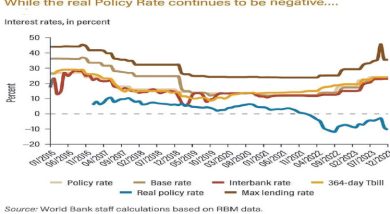Limited financial access worsens food security
Famine and Early Warning Systems Network (FewsNet) has warned that the multiple shocks and existing vulnerabilities will drive food crises in most parts of the country affecting mostly poor households with limited income, reduced coping capacity, and marginal household food stocks.
FewsNet, a Usaid-funded provider of early warning and analysis on food security said this in a recent update of Malawi’s food security outlook for the period between October 2022 and January 2023.
FewsNet said the population in need of food is expected to increase after this month, as an increasing proportion of poor households deplete household food stocks and face severely limited financial access to food due to high prices.

Reads the update in part: “Widespread deterioration due to the food crisis outcome is expected across the country from October to January, which overlaps with the lean season. Most households have limited or no household food stocks hence face significant barriers to purchasing food in the markets due to high prices.”
According to FewsNet most households are likely increasing their use of consumption and livelihood-based coping strategies, including reducing the number of meals consumed per day, engaging in atypical labour migration or selling household assets to purchase food.
After an unprecedented poor start to the previous rainfall season, the supply and demand imbalances are prevalent in the maize market which are largely fuelled by the low production of the commodity, a situation which has been fuelling prices of maize.
FewsNet figures show that in August, the prices of maize, rice, and beans increased and remained above seasonal trends across the country.
Maize prices were between 113 to 200 percent higher than August 2021 and 70 to 180 percent above the five-year average.
Similarly, rice prices ranged from 31 to 133 percent above August 2021 and 45 to 127 percent above the five-year average.
Bean prices, on the other hand, were also higher by 13 to 83 percent compared to the previous year and by 38 to 189 percent compared to the five-year average.
Currently, in most markets in the country, a kilogramme of maize, which used to cost K140 in a similar period last year, has shot up to around K389 which is significantly above the previous year and the five-year averages for the post-harvest period.
Consumers Association of Malawi (Cama) executive director John Kapito said the food prices especially rising maize prices have created challenges on consumers as we have noted a sharp rise in the cost of living.
He said consumers are now suffering a double blow as they are exposed to expensive maize from traders with no other option for the staple.
“With Admarc out of the picture and little supply of maize on the market this year maize prices continue to rise as a result of lack of competition and a reliable market like Admarc.
“This has left consumers at the mercy of unscrupulous traders who are taking advantage of the high demand for maize and unavailability of other reliable markets, in the process subjecting consumers to harsh market realities,” he said.
In Malawi, maize, which is the country’s staple crop, traditionally impacts the country’s economy given its skewed influence in determining inflation rates.
The country’s headline inflation has been on the rise and is currently at 25.2 percent as of August on account of rising food and non–food prices, especially food prices.
The figures show that food inflation went up 33.4 percent, a rise from 32.5 percent the previous month while non-food inflation rose to18.2 percent in August from 17.5 percent the previous month.
Meanwhile, the Malawi Vulnerability Assessment Committee (Mvac) report shows that at least 3.8 million people or 20 percent of the population in Malawi is expected to face high levels of acute food insecurity.
At 3.8 million, this is the highest number of acutely food-insecure population in the last five years compared to 3.3 million in the 2018/19 consumption year and 1.49 million in the 2021/22 consumption year.






One Comment